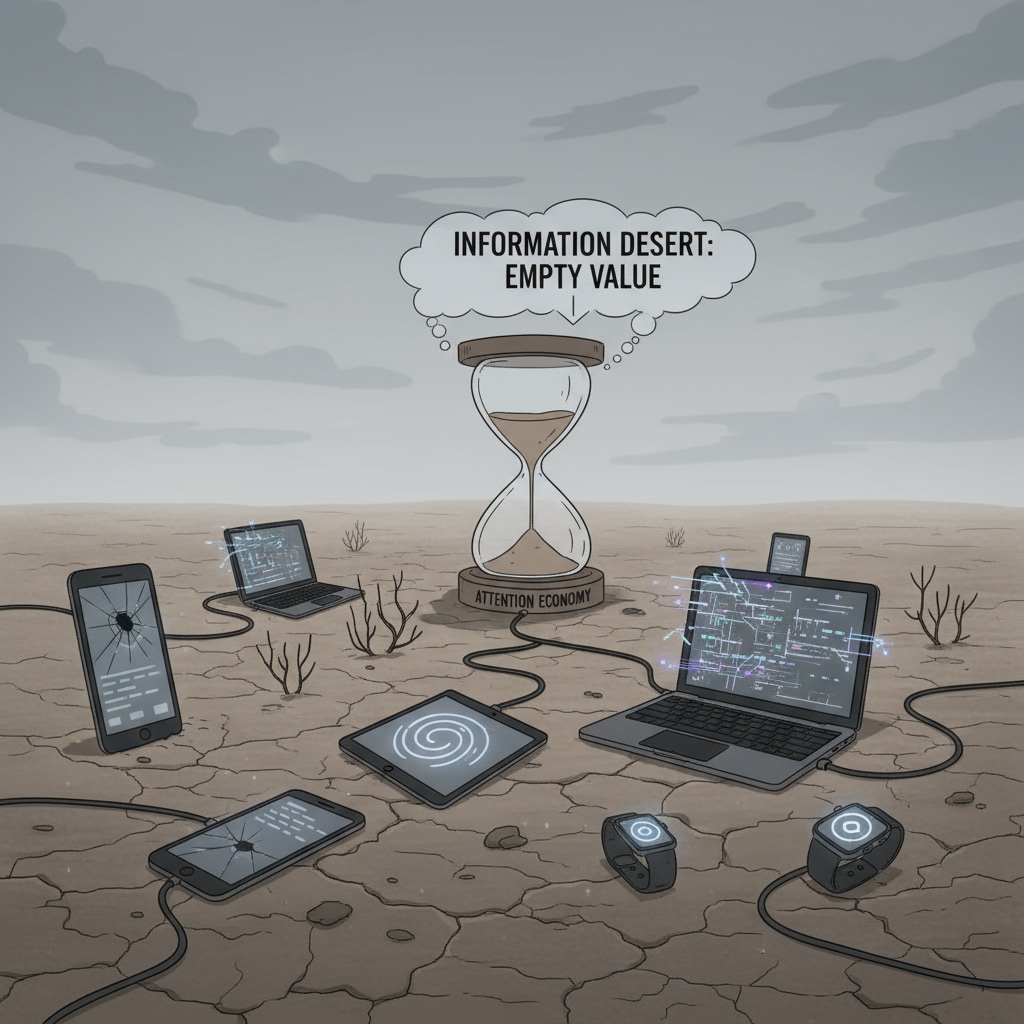The attention economy, information deserts, and the tech industry are intertwined in a complex web that significantly impacts K12 students. In today’s digital age, tech companies have mastered the art of capturing and monetizing attention. Digital platforms, powered by sophisticated algorithms and user-friendly designs, are at the heart of this attention economy. These platforms are designed to keep users, especially K12 students, engaged for as long as possible. However, this pursuit of attention has led to the creation of information deserts, where the quality of information is severely lacking.

The Mechanics of the Attention Economy
The attention economy operates on the principle of capturing and retaining users’ attention. Tech companies use various techniques such as personalized content recommendations, notifications, and gamification. For example, social media platforms analyze users’ interests, behaviors, and interactions to serve them content that is likely to keep them engaged. This personalized approach makes it difficult for users, particularly K12 students, to disengage. As a result, students spend an increasing amount of time on these platforms, often consuming low-quality and shallow content. According to Wikipedia’s entry on the attention economy, this over-reliance on digital platforms for entertainment and information can have detrimental effects on students’ cognitive development.
The Creation of Information Deserts
The attention economy has inadvertently given rise to information deserts. Digital platforms prioritize content that generates the most views, likes, and shares. This means that sensational, clickbait, and low-quality content often dominate the feeds of K12 students. As a result, students are exposed to a limited range of information, lacking depth and substance.

For instance, educational content may take a backseat to viral videos and trendy memes. This not only affects students’ learning but also their ability to develop critical thinking skills. As stated in Britannica’s article on information overload, the constant bombardment of low-quality information can lead to cognitive overload and a lack of focus.
The consequences of the attention economy and the resulting information deserts for K12 students are profound. Cognitively, students may struggle to concentrate, analyze complex information, and make informed decisions. In terms of learning quality, they may miss out on valuable educational content and fail to develop a well-rounded understanding of various subjects. Therefore, it is crucial that educators, parents, and policymakers come together to address this issue. They can work towards creating a more balanced digital learning environment that promotes quality information and healthy attention habits. By doing so, we can ensure that K12 students thrive in the digital age, rather than being lost in the information deserts created by the attention economy of the tech industry.
Readability guidance: The key points are presented in short paragraphs and lists for easy comprehension. Each H2 section has a summary of key ideas. The proportion of passive voice and long sentences is carefully controlled, and transition words are used throughout the text to enhance flow.


